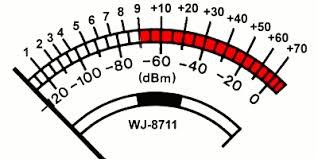By Bob VK3XP
I have lived in my present location for over 40 years, and in the early days the noise floor was just detectable. These days it ranges from S3 to S8 to 9.

So, how does one go about finding where the noise is coming from?
Over the years I have built a number of gadgets to assist in identifying them.
These noise sources can be divided into many categories.
Appliance noise, power line noise, static discharge and RF interference, to name a few.
Finding appliance noise sources can be simply a matter of systematically turning your appliance off then back on again and observing the result. However, be aware that some appliances radiate noise rather than it being conducted through the mains wiring.
Power line noise can be loose connections at power poles, salt spray on the insulators, rusty hardware in cross arms can rectify the AC leakage creating harmonics all up the band. Static discharge produces random crackling usually in dry weather.
Corona discharge is similar but continuous.
What do you use to locate these noise sources?
The first thing to do is to study the character of the noise and log the times it occurs.
Try and describe what it sounds like, is there a pattern, how strong is it, what frequency is it?
This will save you a lot of running around later.
An old AM radio with a loop stick antenna is a good place to start, null out the signal and plot the bearing on Foxhunt or Triangulex applications on your iPad or similar. Take a number of bearings from different locations until you get a small triangle formed on screen. Inside this triangle is your noise source.
To search for corona noise, you will need an ultrasonic receiver that can tune 20 KHz to 44 KHz. The receivers use a parabolic dish to pinpoint and focus the noise into a small microphone (ultrasonic). Reverse parking sensors for cars work well; using similar technology.
The receiver amplifies the noise and feeds this to a mixer where it is converted into an audible signal and fed to an audio amplifier. See CTT at the end of the article.
A small log periodic antenna is useful for searching in the UHF bands. I use an ICOM ICR5 on AM to look for interference from LIPD devices.
On HF a two turn loop with a 200p or 350p connected across the ends to tune the loop on frequency. A small coupling loop 1/5th the diameter of your main loop connected to form a Faraday shield works very well. My method of tuning the loop is to use my antenna analyser to move the SWR plot onto the centre frequency of the noise source; this produces the best result than trying to hand tune as the loop has a very narrow bandwidth.
Brian VK3YNG makes a very nice foxhunting box to use with a 2 metre Yagi.
This has been useful in locating switch mode power supply noise. (And pirates)
Laptop power supply’s that are plugged into the wall but not connected to the laptop are really good radiators of wideband noise, detectable up to ½ a KM away.
The cheap Chinese LED lights that do not have the ACMA tick in a triangle are to be avoided at all cost.
I recently found an unusual noise source in my house, whilst walking down my hallway with an AM receiver tuned to 150kHz I got a very loud AC hum in the radio when I walked past my whiteboard, touching the board attenuated the noise greatly. I scratched my head, how can this be there is nothing connected to it. It has a metal frame and a laminate centre.
This was being excited by a LED PIR night light plugged into an outlet on the other side of the wall. Turned the outlet off, noise was gone. This unit contained a small switch mode power supply.
I also have a wideband noise that extends from 3.0 MHz to 11.9 MHz it is pulsed at the 1 Hz rate and is around S8 to at its peak of 8.804 MHz. This turned out to be my Smartmeter.
My neighbours weather station goes chirp every 30 seconds or so, I can put up with this as it does not have much effect on SSB signals.
I am now waiting for a response from the supplier.
Tip: Search on the highest frequency you can hear the noise source. The antenna are much smaller and more directional.
Use an attenuator in the antenna feedline; increase the attenuation as you get closer to the source. This avoids overload and false indications.
Plug packs using switch mode are a common source of noise, infrared night lights are good sources of noise. Negative Ion generators are great comb generators up to SHF.
I have accumulated an array of devices to search for noise, the old TV field strength meter for analogue signal is very useful as it tunes 37MHz to about 890 MHz continuously.
- A VK3YNG foxhunting box on 2M
- A two metre loop, A two turn magnet loop 5MHZ to 19MHz.
- The ICR5 scanner.
- A log periodic antenna 400MHz to 900 MHz.
- A homebrew Ultrasonic receiver 22KHz to 44 KHz
- A Palomar field strength meter for up close.
